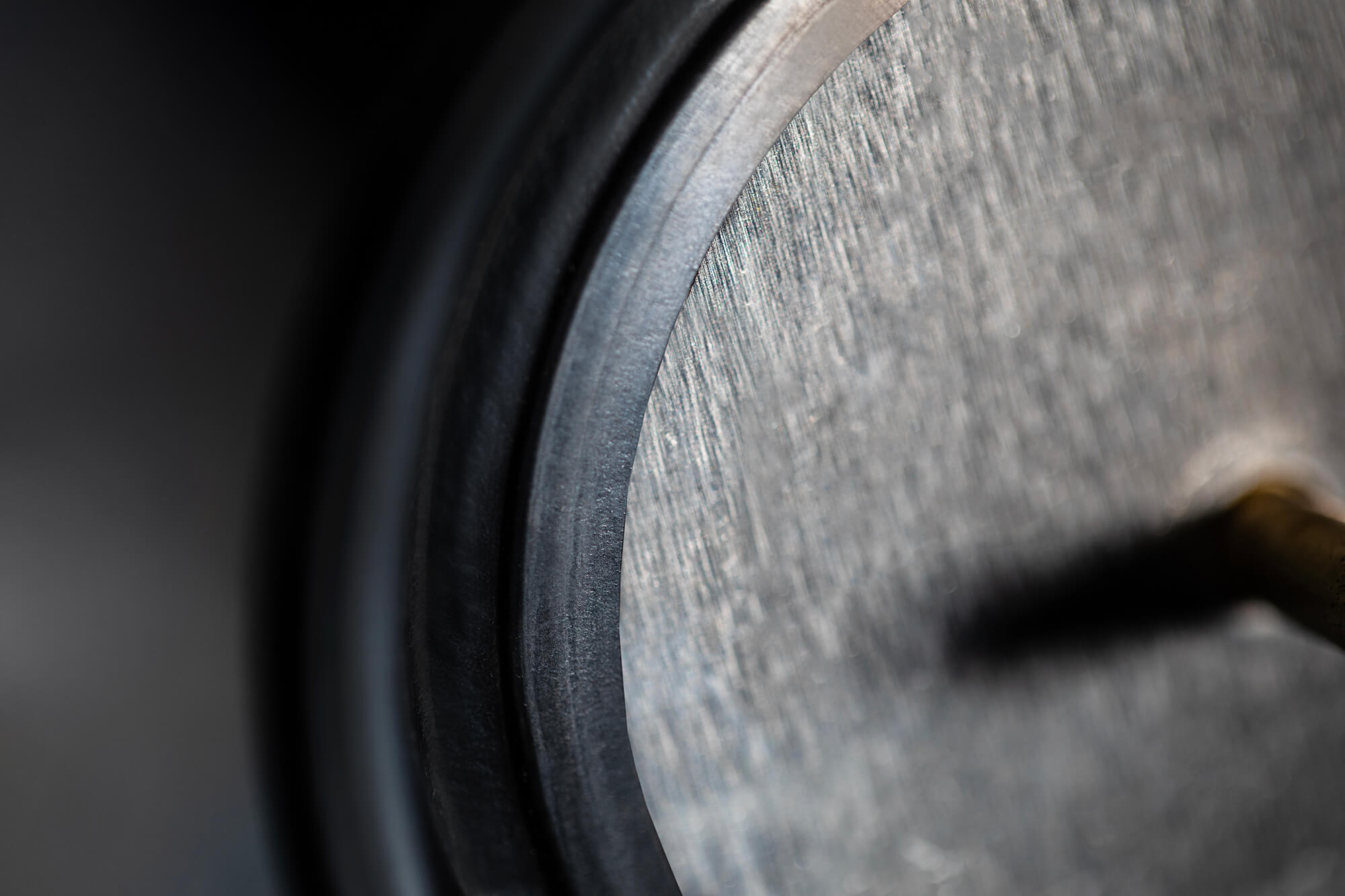
The way to excellence…
Nitrogen deburring
The gaskets are worked in nitrogen liquid (until -140 C) with steel or polycarbonate balls.
Thanks to the wickedness reached and with the shocks caused by the balls, the gasket detaches from the waste rubber.
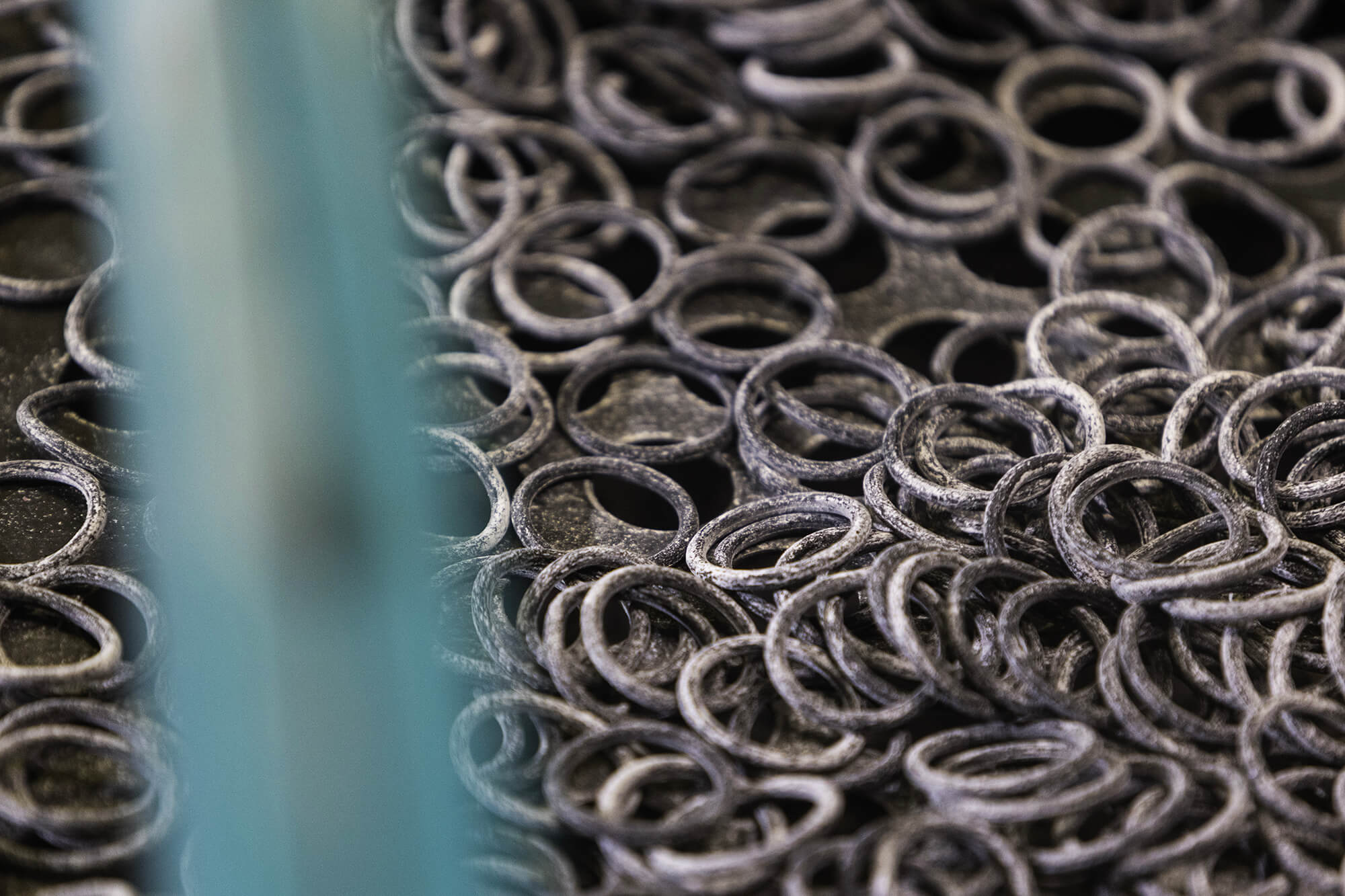
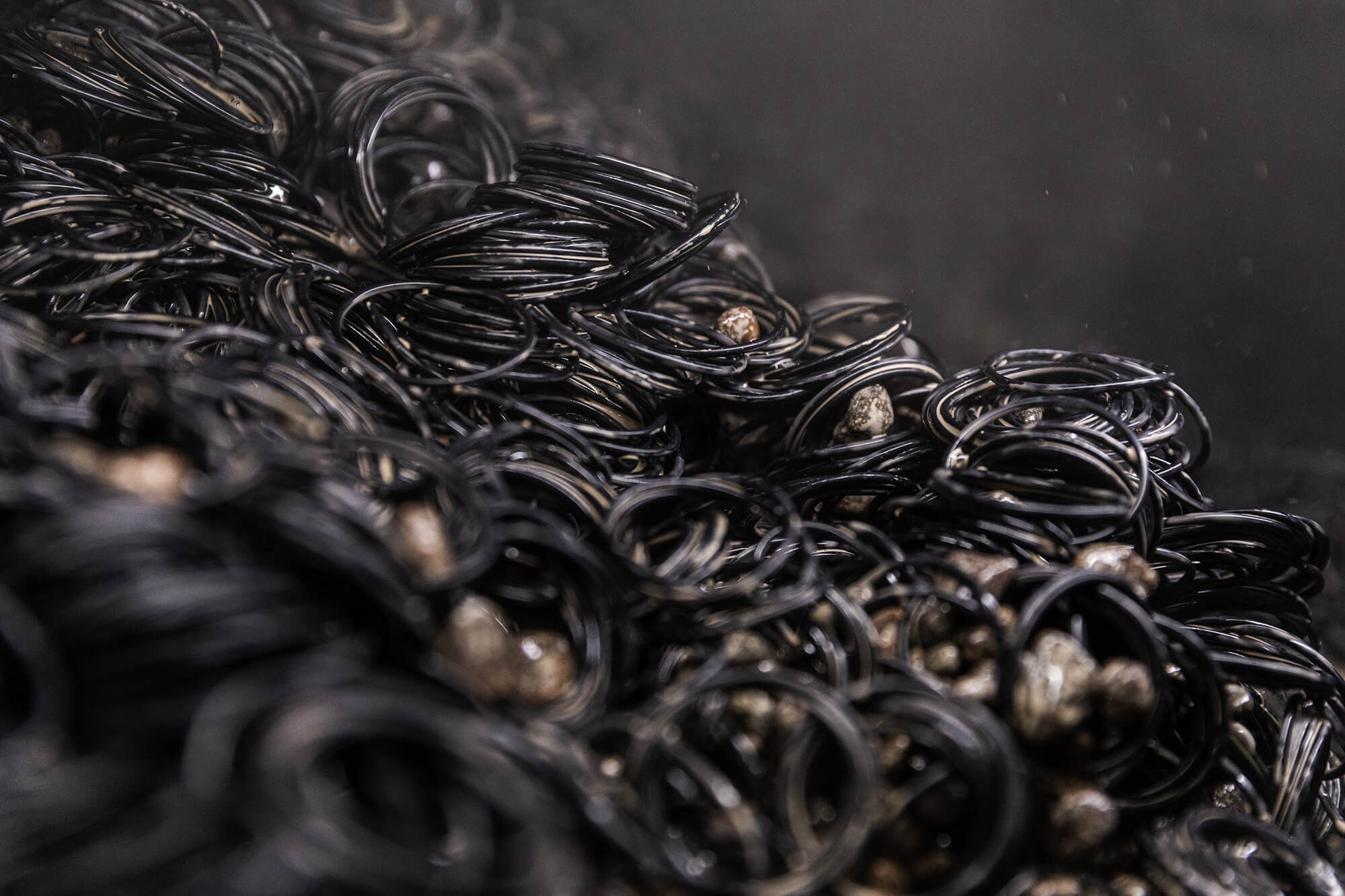
Grinding
Here pieces are worked by abrasion. The barrels are filled by little stones, that rubbing on pieces, they make the part surface perfect eliminating burrs and other residues.
Post-Curing
An important phase of the process. The products are cooked until 240°C to have two effects: the spillage of chemical substances that are not necessaries anymore, and to reach the optimal physic-mechanical properties.
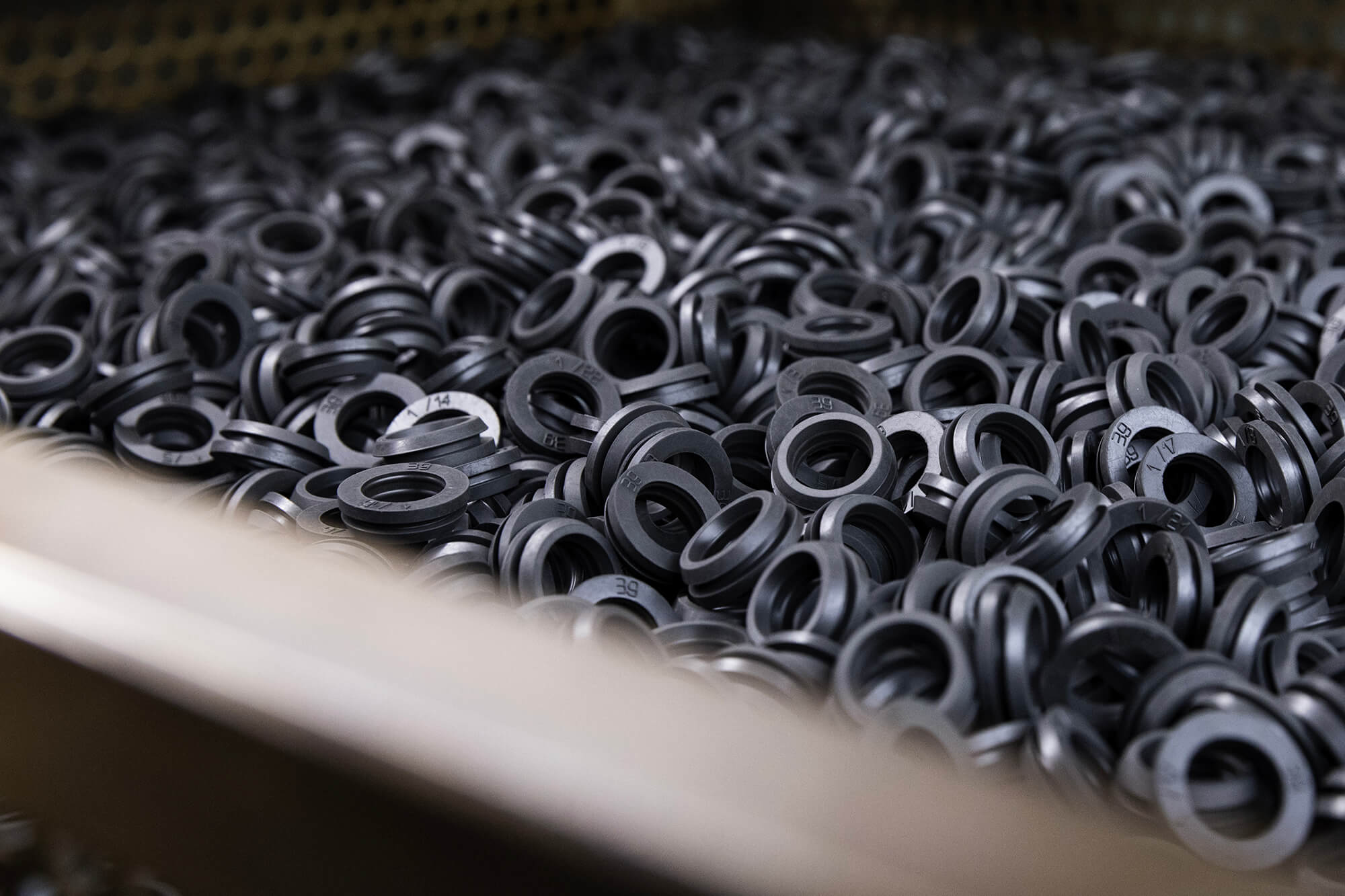
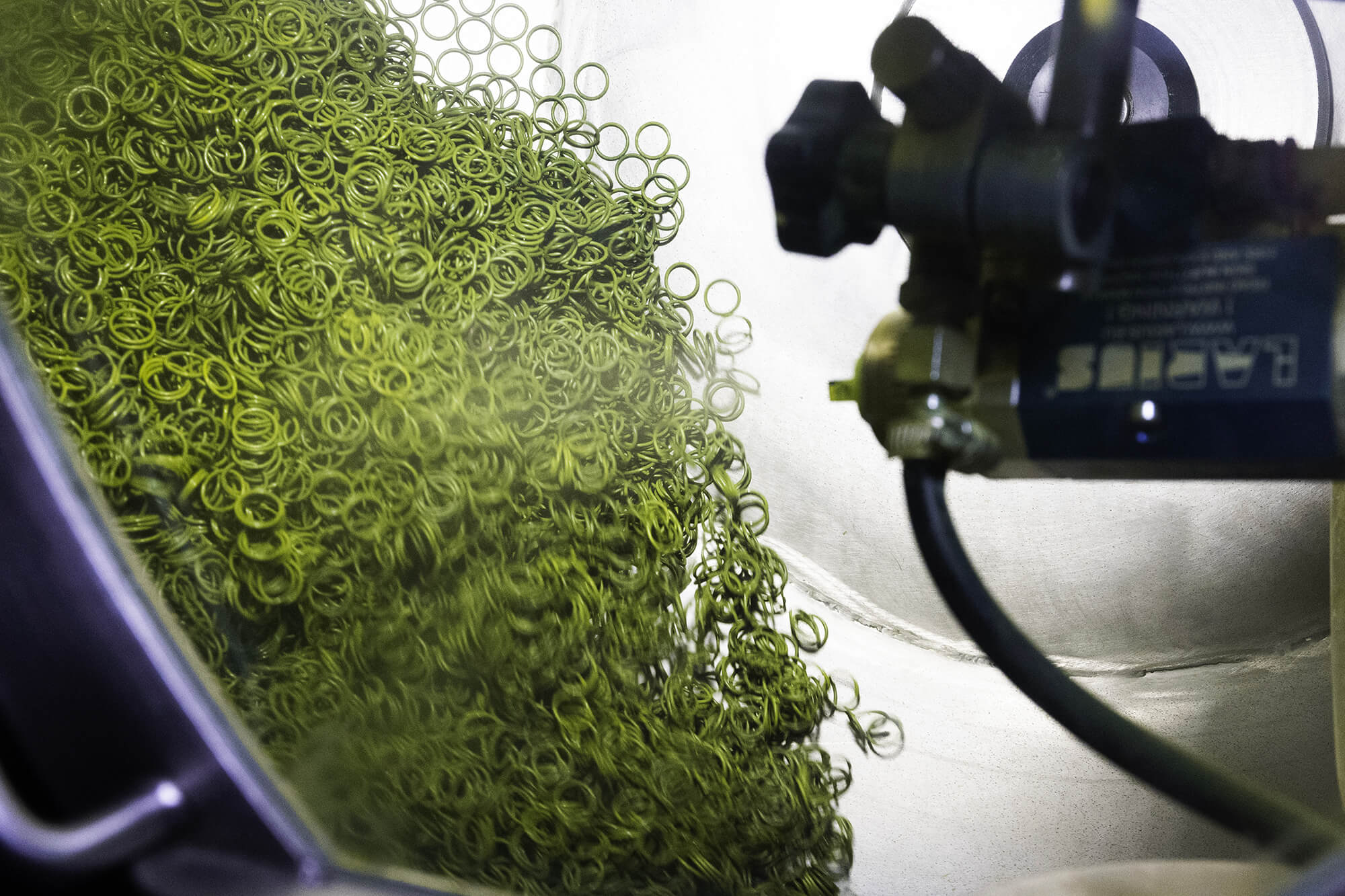
Coating
A spray treatment, that makes gaskets slippery, so they are easy to mount, or to apply a color on the pieces, so that is visible once mounted, in conditions of wick light too.